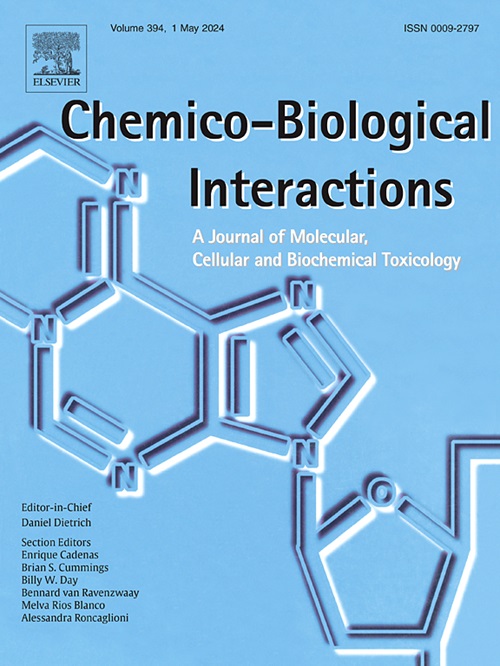Acetyl alkannin, a Shikonin monomer, inhibits the ATM/DDR pathway by targeting ATM and sensitizes cisplatin in solid tumors
IF 4.7
2区 医学
Q1 BIOCHEMISTRY & MOLECULAR BIOLOGY
引用次数: 0
Abstract
Platinum-based chemotherapy is limited by drug resistance and severe adverse effects. Although the DNA damage response (DDR) is known to affect drug sensitivity across cancer types, the role of its upstream regulator ATM in modulating cisplatin (DDP) resistance remains unclear. In this study, we investigated the role of the ATM/DDR pathway to DDP resistance and proposed a potential targeted strategy. Bioinformatics analysis revealed significant overexpression of ATM and RAD51 in liver and lung cancers, which correlated with poor survival (p < 0.05). In vitro assays showed that DDP activated ATM to initiate the downstream DDR, thereby promoting chemoresistance; inhibition of ATM using KU-55933 or siRNA enhanced the anticancer effect of DDP. Among screened Shikonin derivatives, acetyl alkannin emerged as the most potent ATM-targeting analogue. Combination treatment with low-dose acetyl alkannin (2.5 μM or 2.6 μM) and DDP increased DDP sensitivity 8.0-fold in Huh-7 liver cancer cells and 22.5-fold in A549 lung cancer cells. Mechanistically, acetyl alkannin targets ATM and induces its caspase-dependent degradation, suppressing DDR signaling and promoting apoptosis. In vivo xenograft experiments confirmed the superior tumor growth inhibition of the combination treatment. These findings establish ATM-mediated DDR activation as a central mechanism of DDP resistance and identify acetyl alkannin as a candidate sensitizer for platinum-based chemotherapy.
乙酰烷醇是紫草素的一种单体,通过靶向ATM抑制ATM/DDR通路,并使顺铂在实体瘤中的致敏。
以铂为基础的化疗受到耐药性和严重不良反应的限制。尽管已知DNA损伤反应(DDR)会影响各种癌症类型的药物敏感性,但其上游调节剂ATM在调节顺铂(DDP)耐药性中的作用尚不清楚。在本研究中,我们研究了ATM/DDR通路在DDP抗性中的作用,并提出了一种潜在的靶向策略。生物信息学分析显示,ATM和RAD51在肝癌和肺癌中过表达,与生存率低相关(p < 0.05)。体外实验表明,DDP激活ATM启动下游DDR,从而促进化学耐药;KU-55933或siRNA对ATM的抑制作用增强了DDP的抗癌作用。在筛选的紫草素衍生物中,乙酰烷醇是最有效的atm靶向类似物。低剂量乙酰烷烃素(2.5 μM或2.6 μM)与DDP联合治疗可使Huh-7肝癌细胞和A549肺癌细胞对DDP的敏感性分别提高8.0倍和22.5倍。在机制上,乙酰烷醇靶向ATM并诱导其caspase依赖性降解,抑制DDR信号并促进细胞凋亡。体内异种移植实验证实了联合治疗对肿瘤生长的良好抑制作用。这些发现证实了atm介导的DDR激活是DDP耐药的主要机制,并确定乙酰烷醇是铂基化疗的候选增敏剂。
本文章由计算机程序翻译,如有差异,请以英文原文为准。
求助全文
约1分钟内获得全文
求助全文
来源期刊
CiteScore
7.70
自引率
3.90%
发文量
410
审稿时长
36 days
期刊介绍:
Chemico-Biological Interactions publishes research reports and review articles that examine the molecular, cellular, and/or biochemical basis of toxicologically relevant outcomes. Special emphasis is placed on toxicological mechanisms associated with interactions between chemicals and biological systems. Outcomes may include all traditional endpoints caused by synthetic or naturally occurring chemicals, both in vivo and in vitro. Endpoints of interest include, but are not limited to carcinogenesis, mutagenesis, respiratory toxicology, neurotoxicology, reproductive and developmental toxicology, and immunotoxicology.

 求助内容:
求助内容: 应助结果提醒方式:
应助结果提醒方式:


